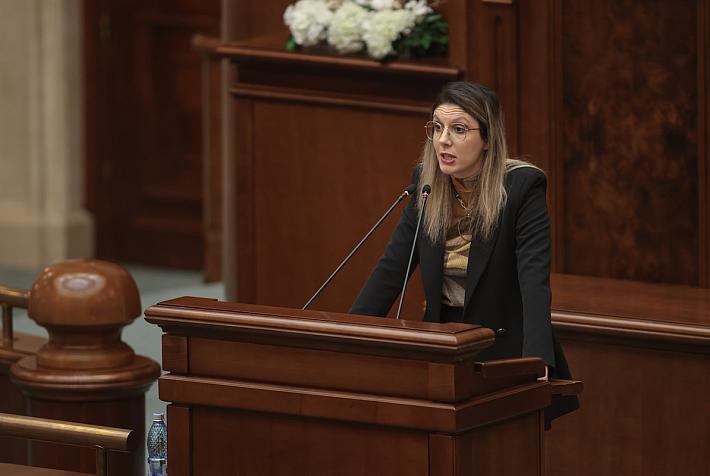Romanian director-photographer team starts film based on Rotterdam art heist of the century

The art heist of the century, the theft of seven paintings from the Kunsthal museum in Rotterdam by a group of Romanians last year in a less than 3-minute robbery has already become subject for a film. Romanian director Tudor Giurgiu (in picture) and photographer Cristian Movila are currently working on this feature – length action movie, which will attempt to show how the robbery took place and how the EUR 18 million worth of paintings were possibly burned in a countryside stove in Romania by the mother of one of the two alleged thieves. The film could be in English and work with an international cast, given the worldwide interest for this story.
The robbery, which has made headline across the world and became the theft of the century, has showed great potential to become a movie even from the start. “The visits to the village of Carcaliu [ e.n. - where one of the thieves' mother lives and where the paintings were allegedly burnt down ], talks with those involved, the special ambiance in the village convinced me there is material for a special film. I got in touch with Tudor [ e.n Giurgiu], an old friend and collaborator, and I am convinced that together we will be able to bring this story to the screen,” said Cristain Movila.
The photographer already tackled this topic in a New York Times story headlined A Trail of Masterpieces and a Web of Lies, Leading to Anguish, which was illustrated with Movila's pictures. The article tells the story of this famous robbery, presenting the main 'heroes', as well as the Carcaliu village in South – Eastern Romania, where the mother of one of the thieves said she burned the paintings.
Tudor Giurgiu and Cristian Movila's team is in full research for the movie, having already interviewed those involved in the robbery, and currently working on the script.
“We have already received collaboration proposals from producers in UK, the Netherlands and the US. The subject sells by itself, it is an excellent pretext for an action movie, but it is different from most of the genre movies. The speed of the robbery, the psychology and motivation of the robbers, the fact that they come from an isolated community, from a village inhabited mostly by old people, all will give color to this universal story. We're thinking about doing the film in English, with an international cast of top European and American actors,” said Tudor Giurgiu.
The future film will also highlight the shifting value of art, which depends on the public that appreciates it. “We have all seen the paintings, invaluable works of art worth millions of euros, but how much is a Picasso really worth in the hands of a mother who believes she is helping her son?” Movila concluded.
The seven paintings stolen by a group of Romanians from the Kunsthal museum in Rotterdam in October 2012 ended up burned in a village in Tulcea county, Romania, where the mother of one of the thieves lives. Radu Dogaru, one of the men who broke into the museum last year and stole the paintings , brought them to Romania inside pillows, and then deposited them at his mother's house in the village of Carcaliu, Tulcea county.
When the investigation started, and after the men failed to find buyers for the paintings, Dogaru's mother got scared and buried the paintings in the yard of a deserted house nearby her home, then in the graveyard, and finally, after prosecutors searched her house in February this year, she dug them out and burned them in her stove. This is how Picasso’s Tete d’Arlequin, Monet’s Waterloo Bridge and Charing Cross Bridge, Freud’s Woman with Eyes Closed, Matisse’s La Liseuse en Blanc et Jaune, Gauguin’s Femme Devant une Fenetre Ouverte (in picture) and Meyer de Haan’s Autoportrait, all allegedly ended up in ashes in a countryside stove in Eastern Romania. The hypothesis is only based on the woman's testimony, and later on new information surfaced suggesting the woman lied to prosecutors to protect her son.
Three men were initially involved in the heist which caused a EUR 18 million prejudice: Radu Dogaru and Adrian Procop, who broke into the museum, without expecting to find artworks of great value, and Eugen Darie, who was an accomplice. After stealing them, the three took off the frames and hid the canvases in pillows which were deposited in the trunk of their car. They entered Romania by car and nobody searched their car at the border. The group tried to sell the paintings with the help of various accomplices, but to no avail, as nobody was interested in buying the stolen artwork.
Dogaru's mother confessed she decided to burn the paintings in an attempt to help her son and hoping that if no evidence of the heist was found, he would escape jail. The prosecutors sent the remaining ashes in the woman's stove to the National Museum of History for a technical expertise, which is still ongoing. The woman could be sent to jail from 10 to 20 years. Other Romanians are also involved in this case, as accomplices, and the prosecutors also started cases against them. The entire file has been sent by prosecutors to the Sector 3 Court, which has set a first court date for August 3.
editor@romania-insider.com












